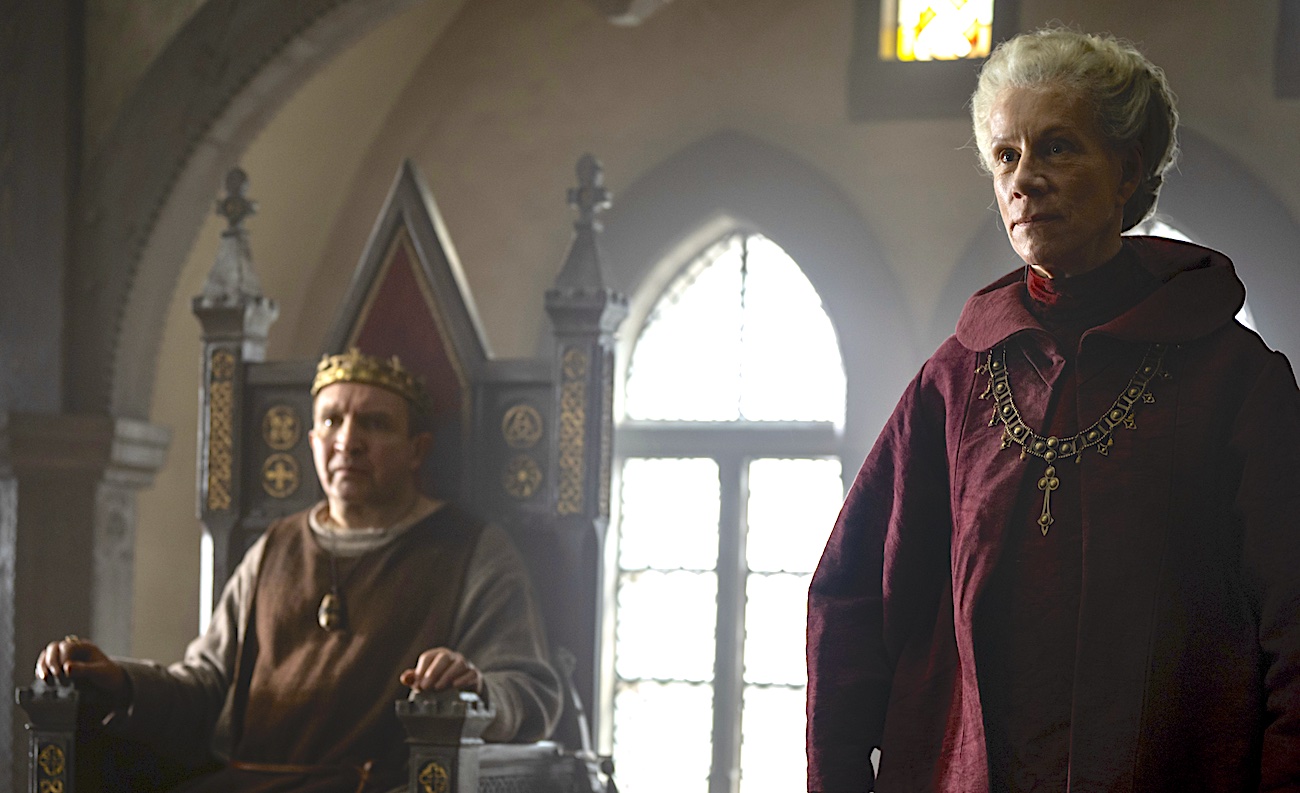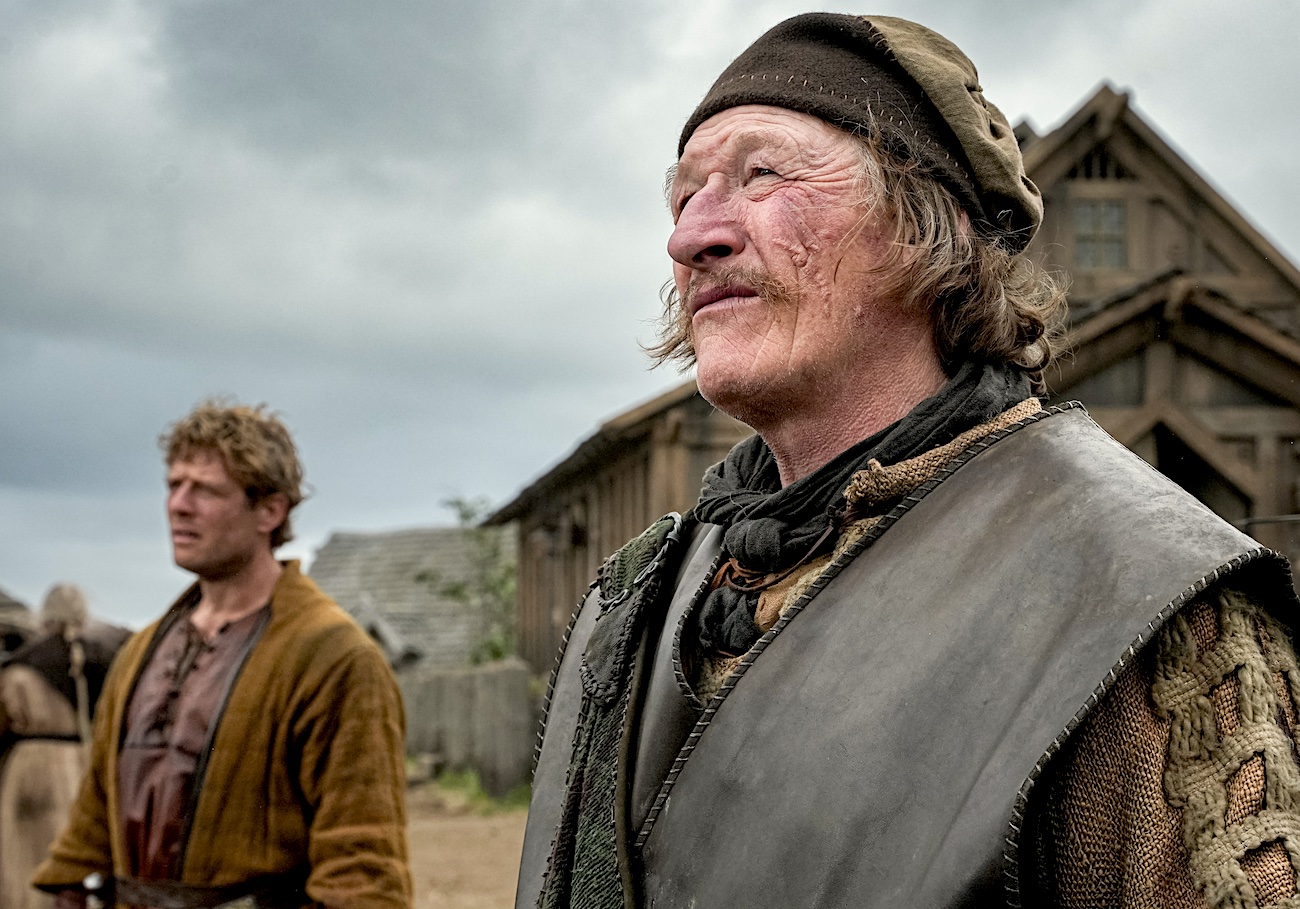In this strangely dreary recreation of 11th century history, it’s not just grim oop north, it’s grim everywhere. King & Conqueror purports to be the story of how the Norman monarch William (the titular Conqueror) and England’s King Harold found themselves locked in a battle to the death at Hastings, each having negotiated a fearsome labyrinth of plots, treachery, ambition and murder in order to become top dog on either side of the English Channel.
But somehow, despite its rather distinguished cast, the drama obstinately refuses to catch fire. Where The Last Kingdom brilliantly evoked the Saxon era with irresistibly-drawn characters and ferocious action, K&C drags itself pedantically through reams of historical exposition and frequently incomprehensible dynastic shenanigans as it battles through its eight episodes towards its inevitable climax. It’s like wading through a swamp, or perhaps a peat bog. Yet despite its apparent desire for authenticity, K&C also takes several outrageous and inexplicable liberties with its historical sources, to the exasperation of historians of the period (Professor Marion Turner has written a fascinating article about this in the Telegraph). Obviously, events which occurred nearly a thousand years ago might well be open to interpretation or guesswork, but deliberately changing names and inventing blatantly fictional scenes seems to be pushing it too far (pictured above, Eddie Marsan as King Edward and Juliet Stevenson as Lady Emma).
Yet despite its apparent desire for authenticity, K&C also takes several outrageous and inexplicable liberties with its historical sources, to the exasperation of historians of the period (Professor Marion Turner has written a fascinating article about this in the Telegraph). Obviously, events which occurred nearly a thousand years ago might well be open to interpretation or guesswork, but deliberately changing names and inventing blatantly fictional scenes seems to be pushing it too far (pictured above, Eddie Marsan as King Edward and Juliet Stevenson as Lady Emma).
But you could excuse all this if the action was brisker, the writing more plausible and the characters more sympathetically nuanced. As William and Harold, Nikolaj Coster-Waldau (a Game of Thrones veteran) and James Norton seem like a perfectly pleasant pair of middle-class professionals, who, in later centuries, might have made decent careers in the law or banking. Even clothed in chain mail and coated in mud, Norton doesn’t convince you that he’s capable of committing wholesale slaughter. Thus, when he finds himself under attack from scoundrels (as in a scene when he and William are in a bath house, though not in the same bath) and turns into a knife-wielding, skull-smashing psycho, it’s rather shocking.
In its determination to depict a Middle Ages when even the weather is fundamentally uncivilised (they hadn’t yet invented climate change), the show has ladled on industrial quantities of sepulchral gloom and glowering skies. Though we might get a steer about where we’re supposed to be when a caption flashes up saying “Northumbria” or “Wessex” or “Flanders”, the look of the thing never alters, so the viewer gets an odd sensation of travelling without going anywhere. Also, though the action purports to take place on either side of the Channel, there’s never any sense of the characters making the journey across (other than an occasional glimpse of a boat moored off a beach in the background). The “London” depicted here just looks like a country house with a big fence round it. Thespian-wise, credit is due to Clémence Poésy, who brings a mixture of strength and knowingness to her portrayal of William’s wife Matilda, while Eddie Marsan portrays King Edward the Confessor as a disturbed, introverted religious fanatic. Jean-Marc Barr and Geoff Bell are surly, bellowing bullies as the French King Henry and Harold’s father Godwin (Bell and Norton pictured above). But top scenery-chewing accolades surely belong to Juliet Stevenson as Edward’s mother, Lady Emma. Equipped with a twin-headlights stare and a murderous and unscrupulous personality, she’s like the mad woman in Jane Eyre crossed with the titular character in Carrie. She looks as though she belongs in another show entirely, but they could have used a few more like her.
Thespian-wise, credit is due to Clémence Poésy, who brings a mixture of strength and knowingness to her portrayal of William’s wife Matilda, while Eddie Marsan portrays King Edward the Confessor as a disturbed, introverted religious fanatic. Jean-Marc Barr and Geoff Bell are surly, bellowing bullies as the French King Henry and Harold’s father Godwin (Bell and Norton pictured above). But top scenery-chewing accolades surely belong to Juliet Stevenson as Edward’s mother, Lady Emma. Equipped with a twin-headlights stare and a murderous and unscrupulous personality, she’s like the mad woman in Jane Eyre crossed with the titular character in Carrie. She looks as though she belongs in another show entirely, but they could have used a few more like her.
- King & Conqueror continues on BBC One on Sundays. All episodes available on BBC iPlayer
- More TV reviews on theartsdesk















Add comment